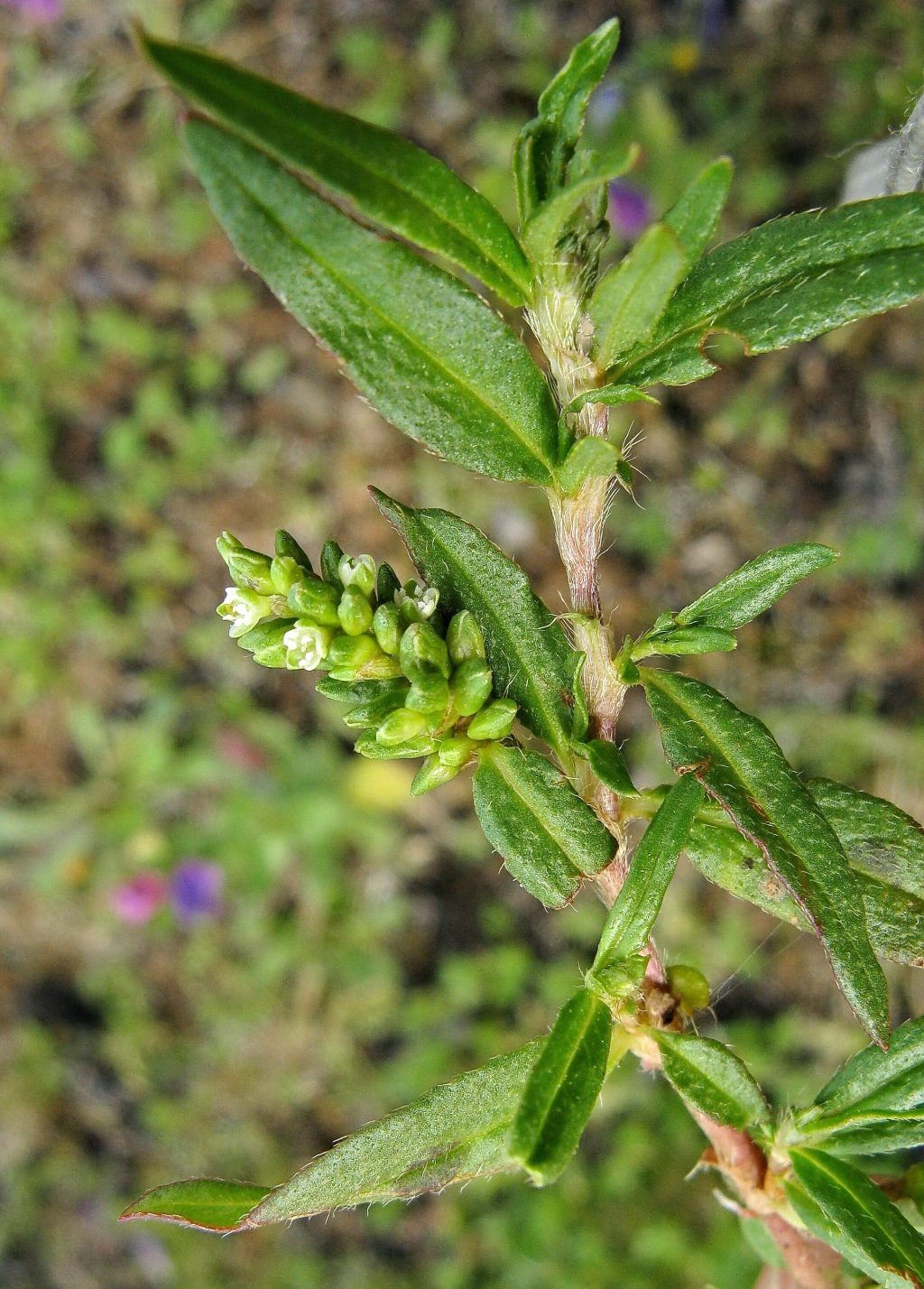Persicaria prostrata
(R.Br.) Soják Creeping KnotweedProstrate perennial, stems to c. 40 cm long, with sparse to rather dense, antrorse, appressed or semi-appressed hairs. Ochreas with a few hairs on sheath and at apex, the upper part of most expanded into a firm green, toothed or lobed limb. Leaves subsessile, lanceolate to narrowly elliptic, 1.5–5 cm long, 3–10 mm wide, margins and main veins with short hairs, lamina glabrous to moderately hairy. Inflorescence cylindric, rather dense, mostly 1–4 cm long, 4–7 mm diam.; peduncle 1–3 cm long; perianth segments 2–3 mm long, wholly green or with white margins, free from about midway. Nut broadly ovate, biconvex, c. 2 mm long, 1.5 mm wide, smooth and shining, dark brown or blackish. Flowers Dec.–May.
LoM, MuM, Wim, GleP, Brid, VVP, VRiv, MSB, RobP, MuF, GipP, OtP, WaP, Gold, CVU, GGr, DunT, NIS, EGL, EGU, HSF, HNF, OtR, Strz, VAlp. Also WA, SA, Qld, NSW, ACT, Vic, Tas (uncertain origin). New Zealand. Rather common on sandy or rocky banks of watercourses, and on heavy soils prone to inundation.
Walsh, N.G. (1996). Polygonaceae. In: Walsh, N.G.; Entwisle, T.J., Flora of Victoria Vol. 3, Dicotyledons Winteraceae to Myrtaceae, pp. 272–295. Inkata Press, Melbourne.
 Spinning
Spinning



